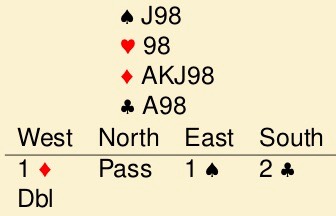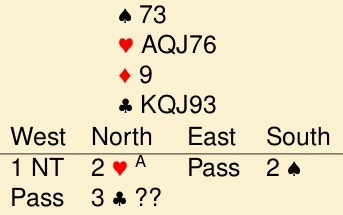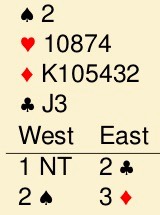Last year, I reviewed the book “Bridgers kunnen niet Bridgen” (in Dutch, I guess the best translation is “Bridge Players cannot play Bridge”) by Frans Schiereck. My conclusion back then:
This is a good read for anybody who is not an expert, but who is serious about improving his game. Read the book slowly and take time to digest the contents. Also, focus on the sections on play and defence as they are much better than those on bidding.
If you are in the top 10% of the federation, read something else, you won’t learn much from it.
Earlier this year, the author published a sequel to the book, “Bridgers kunnen nog steeds niet Bridgen”, roughly translated as “Bridge Players still cannot play Bridge”. I obviously got a copy of that as well.
Volume 2 is, just like the first book, about a rather unusual theme in the bridge literature: the mistakes made at the table by non-expert players, in particular those bids and plays that any expert will immediately recognize as being totally wrong, but that are made week after week by those players. And why do they continue to make these mistakes: well, nobody ever told them that they are wrong and often they are saved by the lie of the cards. Like in volume 1, Frans discusses 40 of those situations in an informal way, as a teacher who shows hands on the whiteboard, without too much structure and without getting into all the details.
I have a theory about sequels. That is: the quality of the sequel is inversely proportional to number behind the title. That is “Rocky II”, the sequel to the 1976 movie “Rocky” is about half as good as the original. Rocky has had 8 sequels… It also happens in bridge books. Larry Cohen’s “To bid or not to bid” is way better than the sequel “Following the law”. The argument in both cases is that volume 1 usually has a new concept or plot, plus some nice scenes liked by the audience. Volume 2 repeats what the audience liked about the first one, but that makes it predictable.
Unfortunately for Frans, his 2 books follow the same pattern. Book 1 was nice to read, even though I’m not in the target audience. Volume 2 is just more of the same. Discussion also seems to be shorter, which makes some of the advice almost impossible to put into actual use.  For example, the chapter on doubles discusses 9 conventional doubles in about 2.5 pages. That barely sufficient to discuss what applies when, let alone discuss all the ramifications. An example is shown on the left. This is a good example of a support double, but I doubt that any of the readers has a clue on what to do next.
For example, the chapter on doubles discusses 9 conventional doubles in about 2.5 pages. That barely sufficient to discuss what applies when, let alone discuss all the ramifications. An example is shown on the left. This is a good example of a support double, but I doubt that any of the readers has a clue on what to do next.

Another example: a local variation of DONT is discussed, but again leaving out some important and discussion of the local extensions limited to a few words. Would you know what to think of this sequence?
2♥ shows the majors but apparently when you are playing in Woerden, this is also the way to show a strong 2 suiter clubs-hearts. What puzzles me about this, is that 2♥ is not forcing and partner will pass with a heart fit. Only when he prefers spades by bidding 2♠, I get a chance to show my second suit. Thus, if partner has a fit, say, ♠xx, ♥Kxx, ♦Axxx, ♣xxxx, I will play 2♥ making 4♥, while opposite ♠Kxxx, ♥xx, ♦Axxxx, ♣xx, I’ll end up going down at the 3 level.
An d then this one. 1NT from partner and you try 2♣ for the expected 2♠ response from partner. Now what?
d then this one. 1NT from partner and you try 2♣ for the expected 2♠ response from partner. Now what?
The suggestion is to bid 3♦, which the other describes as a sign-off. While this is perfect on this hand, this is not even remotely standard and I think it is downright dangerous to teach this to non experts without telling them that this is a non-standard agreement and they better discuss this with their partners first. Otherwise, we’ll have a chapter in volume 3: when is a new suit at the 3 level forcing.
Volume 1 also discussed a lot of declarer play. Unfortunately, that is almost completely missing from this book. There are a few hands, but they are well known in the literature. That is a shame, as the hands in book 1 were quite instructive.
Finally, I think the book could have done with a bit of editing. Missing cards, i.e. east is said to lead the ♦7 where in the diagram he has the ♦86, or hands changing from one diagram to the other On other hands, west is declarer in the diagram, while south is declarer in the text discussing the hands. One can usually figure out what is meant, but a good editor would have fixed those errors, making the book easier to read for the target audience.
Bottom line: Read volume 1, stay away from volume 2.
“Bridgers kunnen nog steeds niet bridgen” has been privately published by Frans Schiereck, to order a copy, transfer €16.95 plus €4.15 postage to his account NL04 INGB 0009 6229 30 and make sure that you include your postal address.
